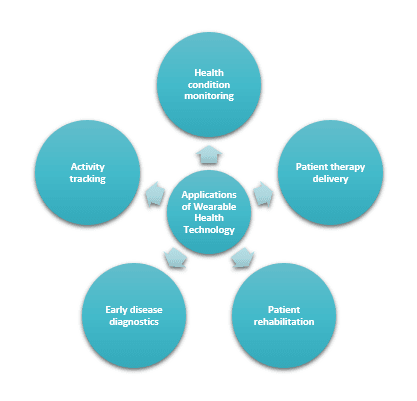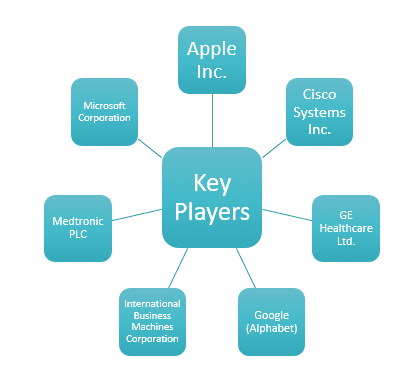“Wearable IoT Devices Revolutionizing Healthcare: Benefits, Market Overview, and Future Potential”
Nowadays, it seems like everything is a smart device. Nothing in this age of smart is more innovative than the wearables industry’s products. Wearable technology assists in the real-time collection and analysis of personal data that teaches us about everything from our health to our exercises. Data on physiological and biochemical characteristics can be collected by a wearable medical device, which is important for patients with chronic illnesses or those who need to monitor a certain physical activity.
What exactly is a wearable? Wearables are electronic devices that are worn on a person close to the skin to accurately transmit important medical, biological and exercise data to a database.
Wearable IoT Devices Benefitting Healthcare Industry
Wearable IoT devices are making a big contribution to the healthcare sector by providing the information that is vital for patients to have control of their health outcomes. Wearable IoT devices can help doctors make decisions, increase patient comfort, and make healthcare environments safer for both patients and staff in hospitals, clinics, and other healthcare settings. Wearables gather a ton of information that aids in the doctor’s analysis of the relationships between various health issues. The analysis and monitoring of fitness data via wearable trackers has benefited heart disease treatment. How it is helping in the improvement of the health is listed below:
- Access to Better Health of Patient
By collecting and analyzing health data remotely, IoT devices can assist physicians and surgeons in performing better. IoT devices can provide real-time insights into a variety of symptoms when they are connected to the cloud. The technology can also enable remote care
- Increased Medical Compliance by Patients
Wearable technology helps patients in different ways, such as by sending them notifications about their meds on a regular basis. Additionally, wearables can continuously track important patient data, and a smart device can send reminders for taking pills based on glucose levels.
- Simplified Diagnosing
IoT-enabled smart healthcare can potentially make diagnosis simpler. IoT healthcare solutions can aid hospitals in lowering the costs of providing care by enabling patients to self-diagnose their own medical issues. Based on the patient data gathered, IoT in healthcare can give the proper knowledge to make more logical conclusions regarding a particular treatment.
Benefits of Medical Wearables

Wearable Technology in Healthcare: Market Overview
The wearable medical devices market was estimated at $16.2 billion, and it is expected to reach $30.1 billion by 2026 at a CAGR of 13.2%. The drivers that impact the market expansion are the rise of lifestyle-associated diseases (e.g., hypertension), the growing demand for home healthcare, and the need to improve patient outcomes.
The global IOT in healthcare market size is anticipated to reach USD 446.52 billion in 2028, growing at a CAGR of 25.9% over the forecast period (2022-2028), according to Fortune Business Insights. The region with the largest market share in the global IoT healthcare market is predicted to experience faster CAGR growth throughout the projected period.
Applications of Wearable Health Technology

What is the Potential of the IoT in Healthcare Market?
Demand for wearable technology that tracks health and fitness data, location, and can be connected to electronics like computers and cell phones has surged because of the COVID-19 epidemic. Because of which, consumers will buy more in-stock wearables for real-time health monitoring. This will raise the demand for healthcare IoT technology development.
Challenges Influencing IoT in Healthcare Market Expansion
In the healthcare industry, out-of-date infrastructure is a well-known issue. Many healthcare companies have been found to still be constrained by outdated healthcare IT infrastructure. When innovative technology is introduced, these businesses need the right people to put them to use. Data security and privacy are a major concern with IoT’s expanding use, which makes the healthcare sector more vulnerable to cyberattacks. Healthcare wearable IoT manufacturers are struggling to keep up with demand or looking for methods to break into this industry. These businesses require the aid of experienced electronic design teams with a focus on wearable IoT devices to create their products effectively and affordably and launch them into the market.
Competitiveness in the IoT Healthcare Market?
There are many well-known competitors in the Internet of Things (IoT) for healthcare. The firms are putting into practice a number of strategic initiatives to help them strengthen their market position, including mergers, the introduction of new products, acquisitions, and collaborations. Some of the key players in the IoT healthcare industry are mentioned below:

Conclusion:
PROS:
- Apple and Fitbit collaborated with the Stanford Healthcare Innovation Lab on the COVID-19 wearables study, and preliminary results show that the study was successful in identifying coronavirus symptoms in 11 of 14 patients before a coronavirus diagnosis was made, using data from the wearable’s measurements of their heart rates
- The use of wearable technology in healthcare enables the monitoring of patients’ health statistics, which may be used to identify patterns with the use of AI and machine learning. The information gathered on each person is then utilized to anticipate possible health issues before they arise, enabling the implementation of less expensive and more efficacious preventive measures.
CONS:
- When attached to the body, wearable medical devices track biological and physiological data and detect, monitor, and record changes. The problem arises from inaccurate and inconsistent measurements obtained during data collection, which is primarily due to a design error or improper use of the wearable. Good product design and a thorough product handbook make will make it simple to prevent this problem.
- Cyberattacks on linked medical devices are on the rise, and security is one of the major obstacles for wearables. By adhering to Food and Drug Administration (FDA) and other security regulations, medical equipment can be made fool-proof. To successfully execute these stringent regulations, businesses that produce wearable technology for the healthcare industry need to hire internal IoT engineers or a trustworthy outside consultant.
Author: Riya Singh
